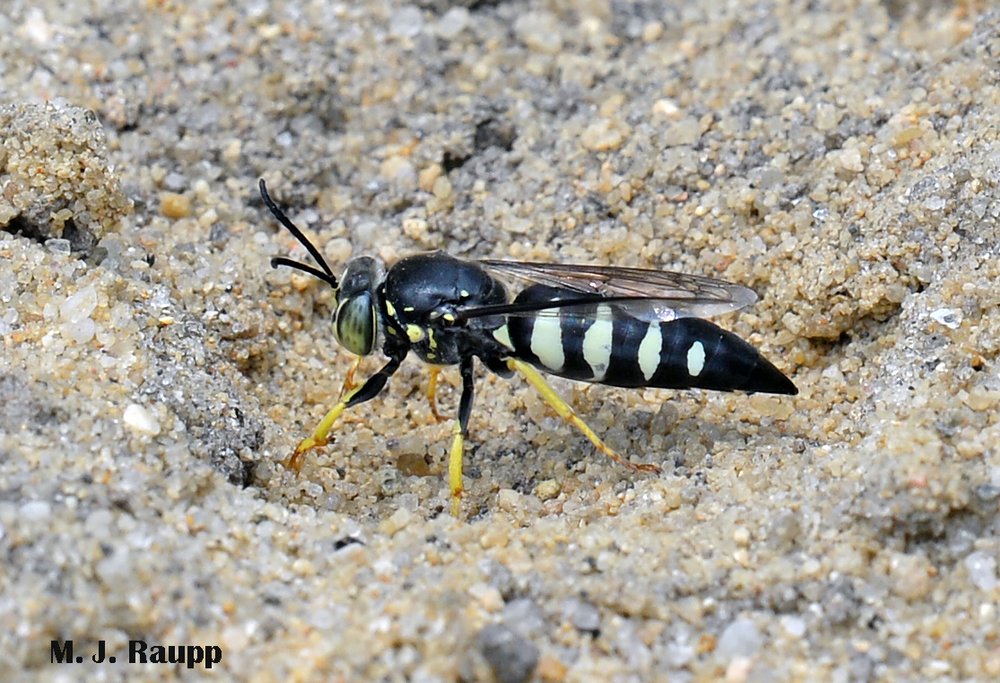
Last summer a four-lined-stink bug hunter prepared to dig a burrow in the ground where a sand box once rested.
Last week we braved frigid temperatures in Maryland to visit larvae of a really cool beetle, the eyed elater, chillin’out beneath the bark of an oak tree, brrr. So, let’s warm up and start this week’s adventure on a sunny beach in Costa Rica where we meet fascinating sand wasps. Sand wasps belong to a family of predatory wasps known as crabronids. After excavating burrows in the sand in which to raise their offspring, female wasps hunt other insects that serve as food for their young. Some, including those in the genus Stictia, have colorful common names like “horse guard" and "insecto policia". These agile fliers often frequent farms where they capture horse flies as they hover and land on horses and other livestock. Stictia sand wasps deliver a paralyzing sting to their victim, transport the fly back to their sandy burrow, and stuff them into a subterranean crypt. Their victims are consumed by wasp larvae that hatch from eggs deposited by female flies. After provisioning the burrow with a full complement of paralyzed prey for her offspring, the wasp will close the burrow with sand. She may add debris from the surrounding area to camouflage the nest. You see, sand wasps have their own complement of enemies including ants that raid sand wasp nests and devour the young within.
On a sunny beach in Costa Rica burrowing arthropods are busy. A ghost crab disappears into its subterranean refuge. Above the high tide line, a crabronid wasp prepares its burrow to receive paralyzed prey which serve as food for its young as they develop beneath the sand. On a warm day in July in a sandy yard in Maryland, a stink bug hunter quickly disappears beneath the sand as she readies the nest for her young.
Keeping with our wistful reverie of warmer times to come, we stop by a sandy backyard in Maryland on a warm summer’s day to meet another sand wasp. This little beauty, Bicyrtes quadrifasciatus, is sometimes called the four-lined-stink bug hunter due to its propensity to capture stink bugs and other members of the true bug clan (Hemiptera) that serve as food for its young. Although I did not have the opportunity to witness a hunting victory of the four-lined-stink bug hunter, several researchers and naturalists have seen this clever tracker provisioning their burrows with nymphs of the noxious brown marmorated stink bug (BMSB). Sand wasps join a cabal of other beneficial predators, including assassin bugs, spiders, and mantids we met in previous episodes contributing to the demise of BMSB in our region. Way to go wasps!
Acknowledgements
Two interesting articles, “Survey of Native Biocontrol Agents of the Brown Marmorated Stink Bug in Pennsylvania Fruit Orchards and Adjacent Habitat” by David Biddinger, John Tooker, Alex Surcica, and Greg Krawczyk, and “Nesting Behavior of the Sand Wasp Stictia maculata (Hymenoptera: Sphecidae) in Costa Rica” by Robert Matthews, Richard Saunders and Janice Matthews, were consulted in preparing this episode.
No comments:
Post a Comment